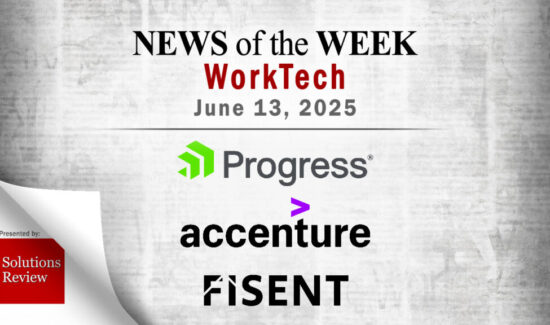Nuxeo Research Reveals the Use of Low-Code Tools Has Increased Since COVID-19

 New research from Nuxeo has revealed that almost two-thirds of software developers have increased their use of low-code development tools in 2020. This is partly attributed to the pressures of launching content-based applications at speed. The research also found that 70 percent of software developers believe digital transformation had become more of a priority to their enterprise since the outbreak of the novel coronavirus. However, 47 percent of those surveyed say they do not have the tools to build applications and products to meet deadlines quickly. Additionally, 44 percent say that their business has abandoned application projects because they took too long.
New research from Nuxeo has revealed that almost two-thirds of software developers have increased their use of low-code development tools in 2020. This is partly attributed to the pressures of launching content-based applications at speed. The research also found that 70 percent of software developers believe digital transformation had become more of a priority to their enterprise since the outbreak of the novel coronavirus. However, 47 percent of those surveyed say they do not have the tools to build applications and products to meet deadlines quickly. Additionally, 44 percent say that their business has abandoned application projects because they took too long.
The report, The Low-Code Imperative, explores how common the use of low-code development tools is among software developers and how that has changed since the pandemic. 61 percent of software developers only use low-code development tools occasionally or rarely, though 55 percent say their employer encourages them to use low-code development tools more.
In a press statement, Chris McLaughlin, chief product and marketing officer at Nuxeo, said, “the pandemic has only served to accelerate digital transformation programs that were already underway, with businesses having to shift further online, provide new customer experiences and deliver better products quicker than ever. Organizations need the right tools to improve agility, flexibility, and to respond to market demands quicker — for content-based applications; the right tools mean low-code development.”
Low-code development tools provide a range of benefits to the organizations that use them. The biggest benefit was that these tools simplify the development process (35 percent), but differentiating from the competition (25 percent), making the business more innovative (25 percent), and improving the customer experience (24 percent) were also mentioned. The user experience and differentiating a brand have become more important this year. Low-code development tools allow enterprises to improve both and bring content-based apps to market faster.
Additionally, there are personal benefits to software developers from using low-code development tools. Over one-third of respondents say using these tools is a more effective use of their time, 32 percent say it enables them to do a wider range of work, and 29 percent believe they can bring more value to the business. This underscores the impact that low-code tools can have on retention and personal development. Because of this, it’s projected that 41 percent of software developers will want more than half of their organization’s app development to be low-code by 2022.
43 percent of those surveyed said it takes more than three months to complete a typical content-based application. Content is critical both internally and externally, and in a fast-paced environment, this is too long to deliver a content-based app. Typical reasons that a content-based application project would be abandoned include an inability to respond quickly enough to changing market requirements (22 percent) and the project taking too long (15 percent).
McLaughlin added, “it’s always been important to be agile, flexible, and innovative, but it’s become even more so this year. To achieve this, organizations need to bring their content-based applications to market much quicker and with a minimum of cost and complexity, and low-code tools will play an increasingly central role in doing so.”
To download The Low-Code Imperative in full, click here.
Looking for more? Download our Business Process Management Buyer’s Guide for free to compare the top-24 products available on the market with full page vendor profiles, key capabilities, a BPMS market overview, our bottom line analysis, and questions for prospective buyers.




















